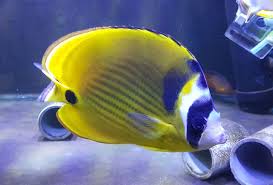
Rosa Canina, commonly known as dog rose, has woven its presence into the rich tapestry of folklore and myths across various cultures. Embedded within these tales are narratives that elevate Rosa Canina beyond its botanical essence, imbuing it with symbolism, mystique, and significance. In this section, we embark on a journey through the captivating stories and legends associated with Rosa Canina.
## 1. Symbolism and Cultural Significance
**a. Love and Romance:** In many cultures, Rosa Canina symbolizes love, romance, and passion. Its delicate blooms and sweet fragrance evoke feelings of affection and desire, making it a popular motif in love stories and romantic folklore.
**b. Protection and Healing:** Rosa Canina is often revered for its protective and healing properties. In folklore, it is believed that carrying or planting Rosa Canina can ward off evil spirits, offer protection from harm, and promote physical and emotional healing.
**c. Resilience and Endurance:** The rugged beauty of Rosa Canina, with its thorny stems and hardy demeanor, is often associated with resilience and endurance. It is admired for its ability to thrive in adverse conditions, symbolizing strength, perseverance, and tenacity.
## 2. Folklore and Legends
**a. The Legend of the Dog Rose:** One popular legend surrounding Rosa Canina tells of its origin as a gift from the gods. According to folklore, the dog rose earned its name when the Greek goddess Diana transformed a beautiful maiden into a rose to protect her from harm. As a symbol of loyalty and devotion, the dog rose became associated with faithfulness and fidelity in love.
**b. The Magical Properties of Rosa Canina:** Across various cultures, Rosa Canina is believed to possess magical qualities. In European folklore, it is said that carrying a dried dog rose bud in one’s pocket can bring good luck and fortune. Similarly, in Celtic mythology, Rosa Canina is associated with the faerie realm, where its blossoms are said to hold the power to grant wishes and fulfill dreams.
**c. The Healing Powers of Rosa Canina:** Throughout history, Rosa Canina has been revered for its medicinal properties and healing virtues. In ancient times, it was believed that consuming rose hips could ward off illness, protect against evil spirits, and restore vitality. In medieval Europe, Rosa Canina was used in potions, ointments, and teas to treat a myriad of ailments, earning it the title of “herb of the heart.”
## 3. Cultural Practices and Traditions
**a. Folk Medicine and Herbal Remedies:** In many cultures, Rosa Canina is deeply ingrained in folk medicine practices and herbal remedies. From soothing teas and tinctures to poultices and salves, Rosa Canina has been used for centuries to alleviate aches, pains, and ailments of the body and spirit.
**b. Rituals and Ceremonies:** Rosa Canina plays a significant role in various rituals and ceremonies, marking important milestones and celebrations. In some cultures, the exchange of Rosa Canina blooms symbolizes unity, friendship, and the bonds of kinship. Additionally, Rosa Canina is often incorporated into wedding bouquets, bridal garlands, and ceremonial wreaths as a symbol of love, purity, and new beginnings.
## Conclusion
The stories and legends surrounding Rosa Canina reflect the deep-rooted connection between humanity and the natural world. Across cultures and generations, Rosa Canina has captured the imagination and inspired awe with its beauty, symbolism, and mythical allure. As we delve into these tales, we uncover the timeless wisdom, cultural significance, and enduring legacy of Rosa Canina in the folklore and myths of the world.
# The Story and Legend of Rosa Canina: Folklore and Myths Surrounding Rosa Canina
Rosa Canina, or the dog rose, has woven its presence into the rich tapestry of folklore and myths across various cultures. Embedded within these tales are narratives that elevate Rosa Canina beyond its botanical essence, imbuing it with symbolism, mystique, and significance. In this section, we embark on a journey through the captivating stories and legends associated with Rosa Canina.
## 1. Symbolism and Cultural Significance
**a. Love and Romance:** In many cultures, Rosa Canina symbolizes love, romance, and passion. Its delicate blooms and sweet fragrance evoke feelings of affection and desire, making it a popular motif in love stories and romantic folklore.
**b. Protection and Healing:** Rosa Canina is often revered for its protective and healing properties. In folklore, it is believed that carrying or planting Rosa Canina can ward off evil spirits, offer protection from harm, and promote physical and emotional healing.
**c. Resilience and Endurance:** The rugged beauty of Rosa Canina, with its thorny stems and hardy demeanor, is often associated with resilience and endurance. It is admired for its ability to thrive in adverse conditions, symbolizing strength, perseverance, and tenacity.
## 2. Folklore and Legends
**a. The Legend of the Dog Rose:** One popular legend surrounding Rosa Canina tells of its origin as a gift from the gods. According to folklore, the dog rose earned its name when the Greek goddess Diana transformed a beautiful maiden into a rose to protect her from harm. As a symbol of loyalty and devotion, the dog rose became associated with faithfulness and fidelity in love.
**b. The Magical Properties of Rosa Canina:** Across various cultures, Rosa Canina is believed to possess magical qualities. In European folklore, it is said that carrying a dried dog rose bud in one’s pocket can bring good luck and fortune. Similarly, in Celtic mythology, Rosa Canina is associated with the faerie realm, where its blossoms are said to hold the power to grant wishes and fulfill dreams.
**c. The Healing Powers of Rosa Canina:** Throughout history, Rosa Canina has been revered for its medicinal properties and healing virtues. In ancient times, it was believed that consuming rose hips could ward off illness, protect against evil spirits, and restore vitality. In medieval Europe, Rosa Canina was used in potions, ointments, and teas to treat a myriad of ailments, earning it the title of “herb of the heart.”
## 3. Cultural Practices and Traditions
**a. Folk Medicine and Herbal Remedies:** In many cultures, Rosa Canina is deeply ingrained in folk medicine practices and herbal remedies. From soothing teas and tinctures to poultices and salves, Rosa Canina has been used for centuries to alleviate aches, pains, and ailments of the body and spirit.
**b. Rituals and Ceremonies:** Rosa Canina plays a significant role in various rituals and ceremonies, marking important milestones and celebrations. In some cultures, the exchange of Rosa Canina blooms symbolizes unity, friendship, and the bonds of kinship. Additionally, Rosa Canina is often incorporated into wedding bouquets, bridal garlands, and ceremonial wreaths as a symbol of love, purity, and new beginnings.
## Conclusion
The stories and legends surrounding Rosa Canina reflect the deep-rooted connection between humanity and the natural world. Across cultures and generations, Rosa Canina has captured the imagination and inspired awe with its beauty, symbolism, and mythical allure. As we delve into these tales, we uncover the timeless wisdom, cultural significance, and enduring legacy of Rosa Canina in the folklore and myths of the world.










